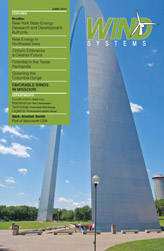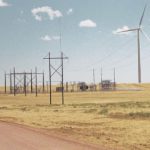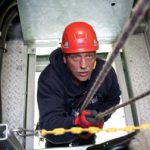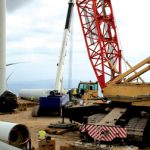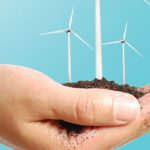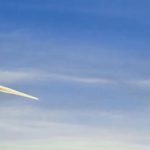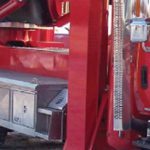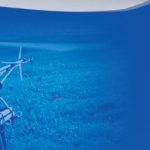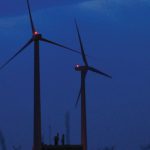You already know this region as a major diversified agricultural center, but did you know that Northwest Iowa boasts some of the nation’s most abundant wind resources? In addition, Northwest Iowa boasts strong, safe communities where education is a priority and sets the tone for a robust and consistent quality of life. Strong community life equals a strong business atmosphere in rural America. Figure 1
While visiting Northwest Iowa, it will not be long before you realize that you are in the heart of rural America. You’ll know it when you experience the vibrant, close-knit communities built on long traditions of hard work. You’ll feel it in the quality of life matched with the reasonable cost of living and a comfortable pace of life. But the Northwest Iowa region has positioned itself to become a high capacity location for all aspects of the wind energy industry. Northwest Iowa can deliver a set of features that are beyond expectations: a region with some of the nation’s most abundant wind resources, easy access to major markets supported by a first-class transportation infrastructure, a welcoming business environment, and outstanding workforce development programs.
“The attributes that are necessary to make an economic region strategically attractive are all here,” says Kirk Grau, director of economic development for Osceola County, which is home to a 150MW wind farm developed by Next Era Energy Resources. “What is starting to occur in the wind energy industry in this region is quite exciting. Simply stated, there is unequaled appreciation for the revitalization that wind development offers the region.”
Wind-Rich Region
The six-county Northwest Iowa region is one of the most wind-rich areas in the United States. Although wind speeds vary slightly throughout the region, most of Northwest Iowa falls into the Class 4 category of wind resources. Class 4 wind resources are suitable for wind power generation with large wind turbines. Over 500 wind turbines are either currently in operation or proposed in the Northwest Iowa region. The broad impacts and long-term economic potential for the region from current and proposed wind energy projects in Northwest Iowa is far-reaching. For example, the wind generation project in Osceola County will generate enough electricity to power 45,000 homes.
The current and proposed wind generation projects appear to be only scratching the surface of what will be coming to this region. The abundant wind resources have captured the attention of industry investors, and important key success factors will lay the foundation for continued wind industry growth. Those factors that have proven to drive the growth of the emerging wind energy industry include abundant available and affordable land and business parks for large scale wind farms and supply chain operations (Figure 2), access to a multi-modal system supported by a strategic location, customized skills training programs, and a business climate and political environment that supports the wind industry. The State of Iowa has proven to be a national leader in the wind industry and ranks second in the nation in current wind generation output. In addition, Iowa leads the nation in wind generation as a percentage of total power output.
Strategic Location
The region known as Northwest Iowa encompasses six counties—Cherokee, Lyon, O’Brien, Osceola, Plymouth, and Sioux—with a total population of just over 100,000. The six counties have a long reach, all within a day’s drive to Minneapolis, Chicago, Denver, St. Louis, Omaha, and Kansas City (Figure 3).
Highways in the region offer timely access to Interstates 29, 35, 80, and 90. The most recent upgrade to the four-lane transportation network is the Highway 60 Expressway, a diagonal route bisecting Northwest Iowa and connecting Sioux City with the Twin Cities in Minnesota. “Highway 60 creates an efficient corridor so we can serve hubs in the region that serve as outbound freight points,” according to Dave Van Wyk, president of Van Wyk Trucking in Sheldon, Iowa. The company operates power units based in Sheldon as well as Kansas and Northern Virginia, and it serves the Midwest, New England, the mid-Atlantic states, and the northwestern United States. Another highway slated to be complete within five years is U.S. 20, which runs along the southern border of the Northwest Iowa region. When complete, a trip from Northwest Iowa to Chicago will be nearly two hours shorter via U.S. 20 than I-80.
Northwest Iowa is also at the center of the country’s railroad network. Union Pacific (UP), Burlington Northern Santa Fe (BNSF), and the Canadian National (CN) all serve the region, as do the Iowa Chicago and Eastern Railway and the regional D&I Railroad.
Trained Workforce
The efficiency of the transportation network to support the wind industry supply chain is a critical component for a region to be competitive. Delivering a competitive pipeline of skilled workers is important, as well. Northwest Iowa workers are renowned for reliability, loyalty, adaptability, and overall productivity. The Northwest Iowa region can deliver a wide variety of customized training and specialized education opportunities to the wind energy industry. Northwest Iowa Community College (NCC), Western Iowa Technical Community College, Dordt College, and Northwestern College offer customized training and continuing education tailored to the needs of the industry and the individual. In addition to customized training, the NCC Business and Industry Training Center offers courses in lean manufacturing, computer skills, quality assurance, and safety, plus “soft skills” training in areas such as management and teamwork.
At nearby Iowa Lakes Community College, the nationally recognized Wind Energy and Turbine Technology Program was established to meet the growing demand in Iowa. This “first in the nation” program focuses on training and educating skilled technicians to install, maintain, and service modern wind turbines. Upon establishing a cooperative agreement with the University of Iowa’s (UI) College of Engineering in 2009, the dean of engineering, Barry Butler, said “The Iowa Lakes Wind Energy and Turbine Technology Program is viewed as one of the best in the nation at educating students in this field.”
Vision for Growth
The six counties that make up the Northwest Iowa region collaborate and coordinate economic development strategies through Northwest Iowa Development (NWID), a formal regional economic development partnership. NWID is responsible for cooperative efforts to establish a common strategic focus, attract and retain new business and skilled talent to the region, and position the region for future growth. The NWID board has established growth in the wind energy industry as the top priority for the region, and consistent with that decision they have adopted the Northwest Iowa Wind Energy Industry Strategy. A strategic vision was established, stating that “NWID will position the area as one of the premier high capacity regions in the United States for wind energy production.” NWID is focusing on all aspects of the wind energy industry including further wind farm developments, wind transmission projects, supply chain/component manufacturing, and repair and maintenance facilities. Key action items in the strategy include the following:
• Continued development of a searchable database of current and potential wind energy supply chain companies (a wind-industry business directory);
• Development of regional cooperative concepts such as foreign trade zones and joint development areas;
• Establishment of a regional investor group to review and participate in new, innovative wind energy business concepts;
• Strengthening business recruitment and retention teams focused on the wind energy industry;
• Establishing a public policy advocacy agenda that will support the continued growth of the wind industry;
• Identification and development of preliminary information, including economic and fiscal impact analysis tools, on potential wind farm development areas and support for proposed site development.
“NWID recognizes the long-term strategic importance that the wind industry holds for our nation and, more specifically, for our economic region,” says Kiana Johnson, executive director for O’Brien County Economic Development and NWID board member. “When we look at the big picture, we understand the exponential possibilities that continue to unfold and how important it is for our region to be prepared.”
Transmission Plans
As the construction of new wind turbines continues to occur across Northwest Iowa, momentum is growing behind plans to build high-voltage transmission lines that will move the region’s wind-generated electricity to major metropolitan areas to the east of Iowa. New transmission capacity will make these wind resources a more-valuable commodity.
One of the transmission projects under discussion is being developed by Clean Line Energy Partners of Houston, Texas. The Rock Island Clean Line would transport 3,500MW of renewable energy originating in Northwest Iowa through Iowa via an overhead high-voltage direct current (HVDC) line to the east. A proposed converter plant—conversion from alternating current from wind farms to direct current—would be built somewhere in Northwest Iowa. Figure 4
“We know we are putting a converter station in the middle of the windy corridor in Northwest Iowa,“ stated Hans Detweiler, director of development for Rock Island Clean Line in a recent article in the Le Mars, Iowa Daily Sentinel. “There is a high probability it will be mostly local Iowa wind that will supply the energy used on the transmission line.”
The additional economic and fiscal impacts over the next five years, in terms of new wind farms and potential supply chain manufacturing activities, would be substantial. Clean Line could be seeking regulatory approval by the end of this year, with project completion projected to be four to five years after final approval.
Northwest Iowa shares an exciting future with that of the wind energy industry, offering opportunities and attributes that are truly beyond expectations.



















